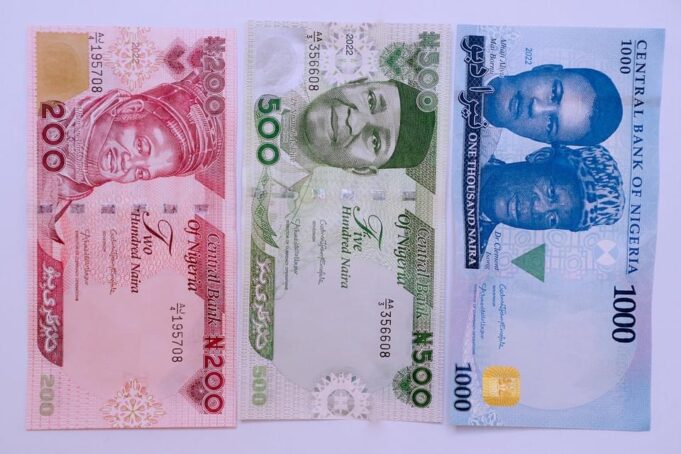Some commercial motorcyclists, popularly known as Okada riders, in the Kubwa area of the Federal Capital Territory, Abuja, are rejecting the new naira notes on grounds of alleged counterfeits in circulation.
A number of the riders, on Sunday, May 7, said they do not want to fall victims of fraudsters in their quest of getting their daily income.
An Okada rider, Salisu Umar, who was seen refusing to accept a N500 new note from a passenger, said the money looked fake.
Umar, who brought out an old N500 note from his inner pocket, compared the squeezed old N500 note to the fairly used new N500 note he was being paid by the passenger.
He said he preferred the old naira notes and since it was back in circulation he has decided to refuse collecting the new notes, especially the new N500 and N1000 new notes.
Another Okada rider, Audu Ezekiel, said he hardly accept the new Naira note from passengers because the notes got old on time.
“When I put the new naira notes in my pocket for hours, before you know it, it would look very old once it’s squeezed small.
READ ALSO: CBN: No plans to withdraw new naira notes from circulation
“Because of the way our job is I cannot be arranging money in my pocket whenever I want to give a customer change,” Ezekiel told NAN.
Another okada rider, who identified himself as Ibro, said he was not totally rejecting the new Naira notes but he did when the note presented to him looked suspicious.
He, however, said it was difficult identifying a real note from the fake one with the naira redesign, adding that most of the new notes looked fake to him.
He stressed that because the new and old notes were acceptable with more of the old notes in circulation, he preferred to be in possession of the old notes which is the one he is familiar with.
Ibro said another reason most of his colleagues felt the new notes in circulation were fake was because Automated Teller Machines (ATMs) and Point of Sale (PoS) were no longer dispensing new naira notes.
“So when we see a new note, we suspect its production and this is because we don’t want to lose money that might be identified as fake when we go to buy something,” he said.
A passenger and resident in Kubwa, Ngozi Ibeh, frowned at the attitude of Okada riders who had severally rejected new Naira notes from her.
“I was going to work on Thursday and took Okada from my house to Federal Housing Junction where I usually enter car to secretariat.
“When I got to the junction and gave the man N500 new note to collect N350 change, he refused it and said I should give him the old N100 note he saw with me rather than the N150 he was meant to collect.
“I was happy he collected the N100 though because I had limited cash on me but for how long will the rejection continue,” Ibeh said.
She stated that there was a need for the Okada riders to be sensitised on the naira swap and its redesign even though there had been reports of counterfeit notes production in some states.
“Unfortunately, we have also heard reports of fake old Naira notes so I don’t know why they are acting this way towards the acceptance of the new naira notes,” she added.
Since the CBN released the redesigned naira notes in the denominations of N200, N500, and N1,000, fake notes, especially of the new N1,000 notes have reportedly been in circulation.
The Central Bank of Nigeria (CBN) has assured that the banknotes were protected by some security features to enable easy recognition of genuine notes.
According to a statement by the Currency Operations Department of the apex bank, one of the distinguishing features between fake and real notes can be recognised by touch and visibility.
“If the texture of the Naira note is soft and the image in it appears dull, it is likely to be fake.
“This means that you should be sensitive to the touch of the money you are given when involved in any transaction.
“The N1,000 note has a gold foil on the right side, just near the CBN Governor’s signature.
“If you scratch the gold foil of a fake note it will peel off instantly, but the gold foil on the original note does not peel,” the CBN noted.










